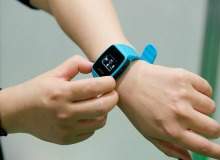

From fitness trackers to cameras, wearable technology rose to the top of consumer wish lists last year. Advances in smartphone connectivity mean users can now track, record and analyse data on their activity using a variety of devices worn on their body or clothing. The potential industry applications range from the obvious to the obscure, but the oil and gas sector has so far failed to capitalise on the emergence of the technology.
An organisation within BP is looking to change this, and is actively reaching out to tech developers. The Digital Innovation Organisation (DIO) at BP uses digital innovation to meet BP’s business challenges. In the words of its technology principal Blain Tookey, "We evangelise and educate people inside the company…and catalyse the business to use new technology."
Safety and suitability: challenges for wearables
Speaking at the Wearable Technology Show last week, Tookey took to the stage to declare that the time is now for wearables to enter the oil and gas market. However he also outlined the specific industry requirements and regulations of which developers need to be aware.
From a safety perspective, all electrical equipment in use on excavation and refinery sites, whether on or offshore, must be certified as intrinsically safe. This means it reduces or eliminates internal sparking, reduces the chance of dust shorting a circuit, and keeps temperature to a minimum, so as not to ignite flammable gases and fuel. It sounds like an easy requirement to tick off, but the certification process can last anywhere between six months and three years depending on the type of product and where it will be used.
Designing or adapting wearables for the oil and gas setting also has technical considerations for working in a harsh environment. "Wearable technology will have to survive extremes of temperature, from over 60°C in the deserts of Iraq to -50°C in the winters of Alaska," explained Tookey. In addition to temperature extremes, the products would have to withstand dust and corrosive materials, as well as being robust enough to handle severe knocks.
Connectivity is another issue which BP is keen to work with developers to get around when it comes to wearables. The presence of heavy metal on many of its sites stops WiFi from working, so the user must rely on 4G and other methods to transmit data from device to device and back to the control room.
Tookey says these challenges should not deter wearable technology developers from investing the time and money into specific products for the oil and gas market. He makes the point that every field worker is already wearing thousands of pounds worth of bulky equipment, which could be replaced by wearables. "There is a big market," he said. "The value of wearables is undeniable".
Oil giant seeks developer
Tookey expressed interest in talking to "start-ups, venture capitalists, universities and their spin-outs as well as mainstream companies" to find useful applications for wearables within BP and its operations.
As well as issuing this call, Tookey also illustrated how current wearable technology could be applied on oil and gas sites. To ward off danger, innovations such as wearable sensors to detect dangerous levels of gases could cause the jacket of the user and their nearest co-workers to light up, as well as transmitting the issue back to staff in the control room.
To promote general wellbeing, wearables on wrists could detect vital signs, monitor health and activity and even alert relevant persons in case of an emergency. Workers could be advised on their health using data from this type of device, battling the perennial issue of poor health among field workers, especially those offshore.
Tookey seemed most enamoured with the idea of using heads-up displays, whereby the user can see their tasks and critical information without needing to use their hands. This would be a revolutionary change from the ruggedized toughbooks currently used in oil and gas and other industries. Another, very futuristic addition to this technology would be the addition of augmented reality (AR). AR exists currently by holding a tablet’s camera up to an object and the program recognising the object and providing the user with information and instruction on it. If AR could be brought to intrinsically safe glasses or visors worn on helmets, this could see a revolution on how work is distributed, completed and reported on in the sector. It is a far off dream, but one worth investing in.
True to his word, Tookey could be seen perusing the stalls at the Wearable Technology Show, pausing to ask questions and discuss capabilities. One of the exhibitors, Visijax, is already working with BP on a project, but were tight-lipped on the details.
Just as its predecessors the smartphone and tablet have morphed into a guise suitable for use in oil and gas, it is inevitable that wearables will do the same. BP are seemingly leading the way on this, and if developers can work with the DIO team to design, test, and bring into being specific wearables for the market, others will be sure to follow.



